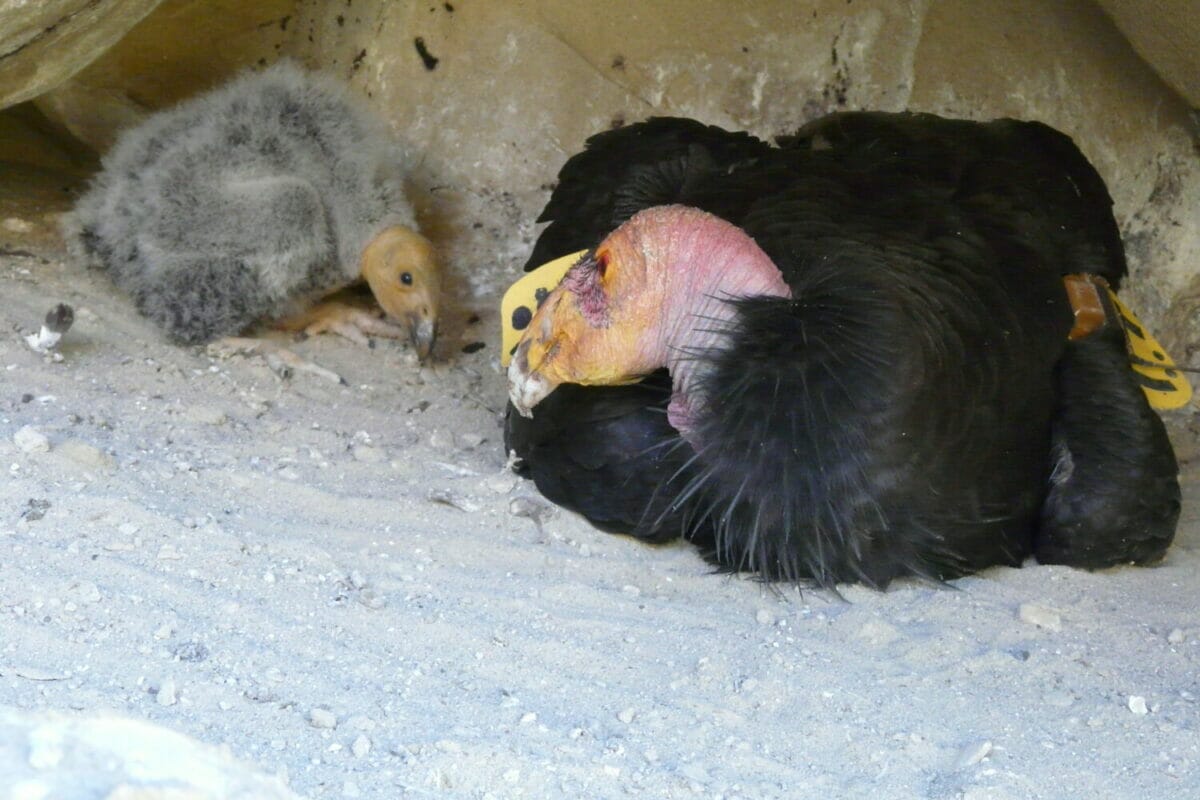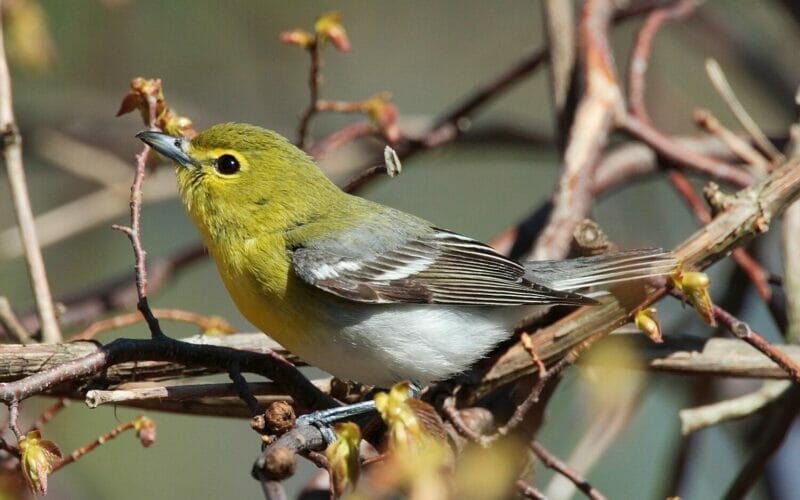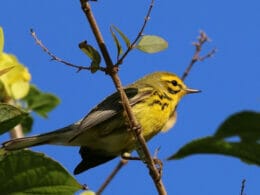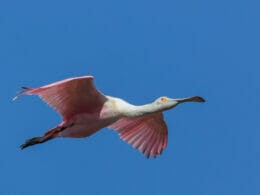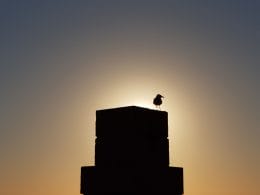There are several factors that determine how long a baby bird stays in its nest. Evolution, habitat, predation threats, food sources and weather to name a few. It is in the parents interest for chicks to leave as soon as possible but the reverse is also true. Who hasn’t heard the plaintive whines of young birds begging to be fed? Nestlings face a challenging time, balancing needs and threats all on instinct. In this post we will explore how long some species support their young and how quickly some chicks are on their own.

Factors in determining how long the nestling stays in the nest
Ability to Fly
If you are a chick in a nest on a branch, in a tree – when you leave that nest there are 2 possibilities. First that you fly and second that you plummet. It is the first big hurdle for some birds. And its not just songbirds. Some species of petrel that nest on hillsides and cliffs, are launched downward and they have one attempt to get it right. They must have appropriately developed wings before they take the plunge. But how do they know they are ready?
It is not as simple as staying longer in the nest. Any stationary bird is vulnerable to prey, especially animals that actively search out nests for eggs or young birds. The type and location of the nest will be a huge determining factor in how long the nestling stays there. Evolution has allowed birds to develop appropriate fledgling times for birds in different environments. Birds will be able to stay longer in nests that are in cavities rather than in a scrape on the beach.
Availability of Food
Birds time their breeding to coincide with the most available food. That is why most birds breed in spring when food sources are more abundant than at any other time. However, if food is scarce for some reason then the parents will not be able to sustain themselves and their chicks. So, they will stop feeding the young or will ignore the weakest. In this case, nestlings will have to leave the nest early to forage for themselves, if they are big enough.

Warmth
We all know that any baby animal is susceptible to the cold. If we find a new born animal in distress, our first instinct is to wrap it up to keep it warm. If there is an unexpected cold period during breeding then baby birds will have to remain in the nest longer as their ability to self-regulate their body temperature is very limited.
Environment
Many species of small shorebirds lay their eggs in a scrape on the ground on the beach. This is incredibly dangerous and a huge issue around the world with the human love of the sea and beaches. As soon as eggs hatch, the wet birds begin to dry out and develop their fluffy down. I have seen these birds be moving within 30 minutes and out of the nest in a couple of hours. They are not fed in the nest but they begin to forage very quickly under the careful watch of their parents.

Here are some examples of birds and the length of time the young stay in the nest.
Spotted Sandpiper (Actitis macularius)

Nesting
The Spotted Sandpiper makes its nest out of dead grass and small twigs. It is built inside a scrape close to water (not necessarily on a beach) but with some shade. Timing is co-ordinated with food availability.
Chicks
Hatchlings are downy and will begin to move after 30 minutes. Next, they will stretch and begin walking at 4 hours old. They stay close to the nest until all birds have hatched. Under parental guidance, and once all the chicks have hatched, the birds will begin investigating their surroundings. They will be catching insects with 1-2 days. In the third week, the chicks will be approaching adult size and can fly. They will remain with the parents until at least week 4.
Wood Duck (Aix sponsa)
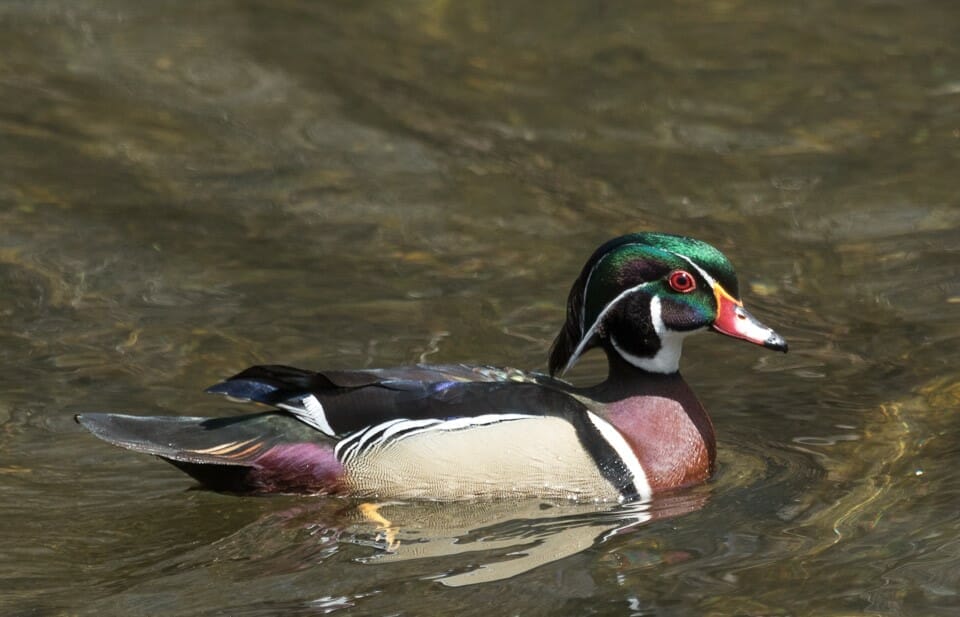
Nesting
The Wood Duck is unusual in that it breeds in late summer and into fall and winter. It doesn’t build a nest but finds a cavity in a tree. The site must be reasonably close to water. Once chosen, the female will line the cavity with her own down.
Chicks
The ducklings will hatch closely together and be ready to leave the nest the following morning, a maximum period of 24 hours. Encouraged by the female, the ducklings leap from the nest to her. This can be dozens of meters distance. Once the brood is gathered, the female will take them away from the nest and will actively care for them for 2 weeks.
American Flamingo (Phoenicopterus ruber)
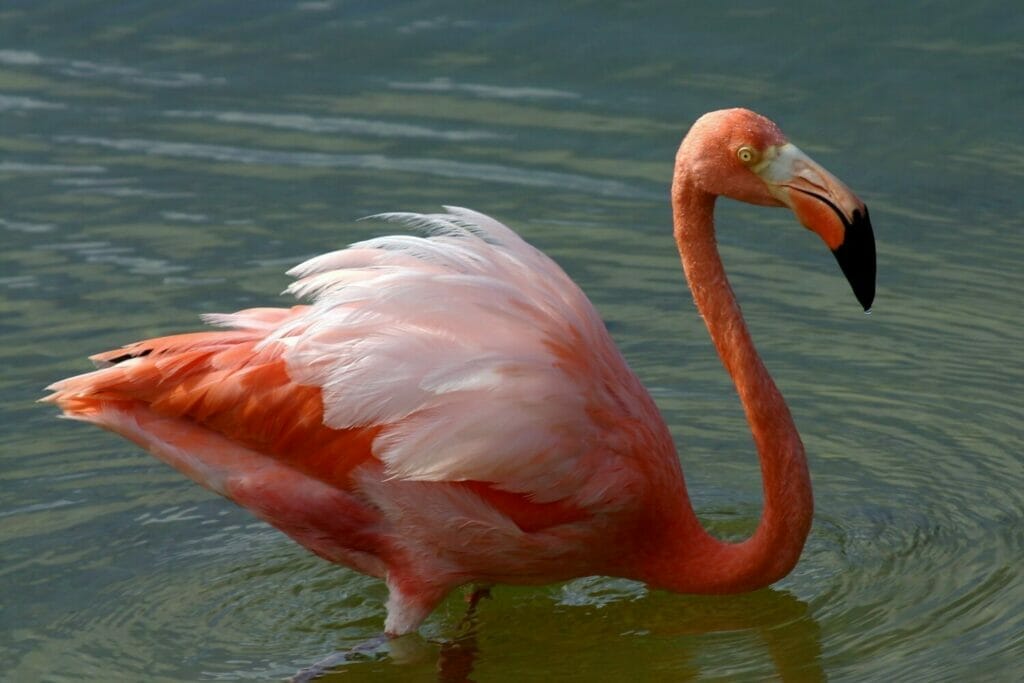
Nest
This flamingo builds a mud cone nest. On the top is a small bowl and they usually lay one 1 egg.
Chick
Once hatched the baby flamingo is very ungainly, although it can quickly raise its head and it will quickly be exercising its wings. As soon as it can stand upright and then walk, it will leave the nest to explore. This is usually as early as 4 – 7 days from hatching. Although the parents will monitor the chick, they will often gather in large groups – a sort of creche. The parent can identify their own chick within the group and continue to feed it.
Northern Cardinal (Cardinalis cardinalis)
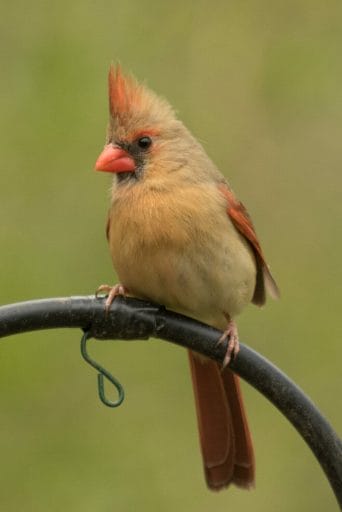
Nest
The female cardinal builds the nest, wedging a bowl shaped affair into place. They choose a dense area of foliage for concealment.
Chicks
Chicks hatch in an orderly fashion, one after another over a period of around 24 hours. The hatchlings are naked with their eyes closed and can only hold their head up and open their mouths. As soon as they can, they will beg for food. This will continue for at least the first week. Most chicks will leave the nest between 9 and 10 days, although it could be as early as 7 days. They are encouraged by the parents and should be able to fly minimal distances.
Barn Swallow (Hirundo rustica)
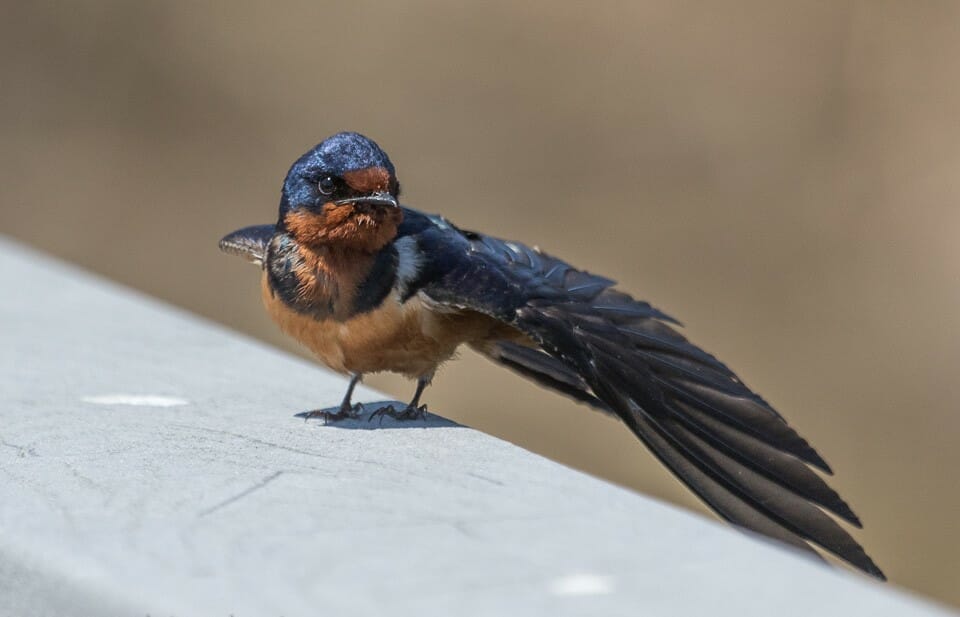
Nest
When the Barn Swallows arrive at their breeding grounds, they will immediately begin to search for suitable nesting sites. They create mud nests on walls and ceiling or other suitable surfaces, usually man-made. The nest may have grass incorporated into the mud.
Chicks
Chicks usually hatch together over a 24 hour period. The hatchlings will begin to develop feathers in week 2 and their eyes will open. Next, they become more alert and will start exercising their wings. Preening begins by the end of week 2. Development is quite slow and the chicks are not ready to leave the nest until the end of week 3. They will return to the nest to sleep for several more days.
American Crow (Corvus brachyrhynchos)
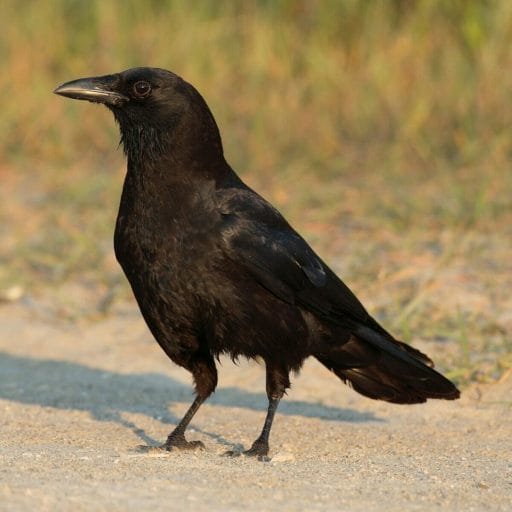
Nest
Nests are built up to 60 feet high in trees, where available. In more urban areas, nests may be built is shrubbery or even on buildings. They are made from twigs of differing sizes and lined with soft material like moss or man-made fibers.
Chicks
The female will lay 4 – 5 eggs and incubate for around 18 days. Once chicks are hatched, they grow very quickly. However, they still remain and develop in the nest for around 30 days before fledging. They will remain close to their parents for another 10 – 14 days while they build strength and experience.
Horned Puffin (Fratercula corniculata)
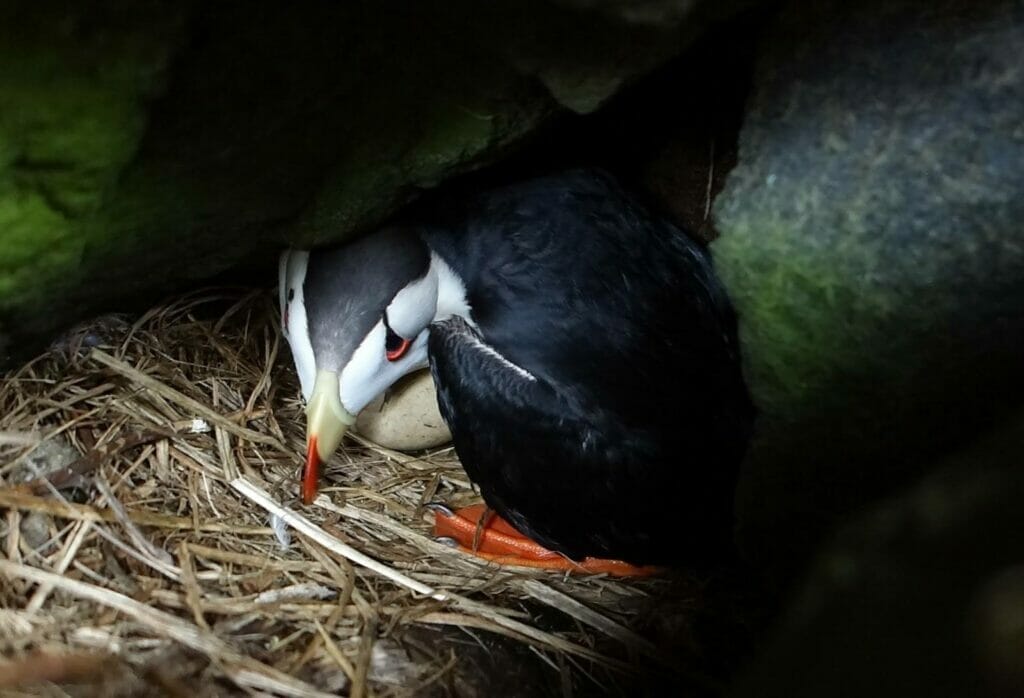
Nest
The Horned Puffin breeds in coastal areas of Alaska. They create a nest inside rock crevices or cracks. The birds will clean out the nest site and the collect material to line it with. This includes grass, twigs and feathers.
Chicks
The hatchlings emerge from the egg with their eyes open and with some down. Their subsequent development will depend on how much they are fed and both parents will attempt to keep the chicks sated. Because of the variability of food and hence, growth, the fledgling time is also variable. Chicks could leave the nest anywhere between 34 – 43 days.
Great Horned Owl (Bubo virginianus)

Nest
Like other owls, the Great Horned Owl chooses a suitable cavity to nest it and then lines it with suitable material from the surrounding area.
Chicks
Chicks are immobile when born, naked and the eyes are closed. They don’t open until the middle of the second week. The nestlings quickly develop the ability to beg and cry for food. They are able to raise their heads by day 3 and pass their first pellet by the end of the first week. It takes until the end of the 3 week before they are fully alert and engaged with their surroundings. They are able to feed themselves at 3 weeks but the female parent may well still feed them. They move out of the nest onto branches close by day 42 and after that, begin flying short distances.
California Condor (Gymnogyps californianus)
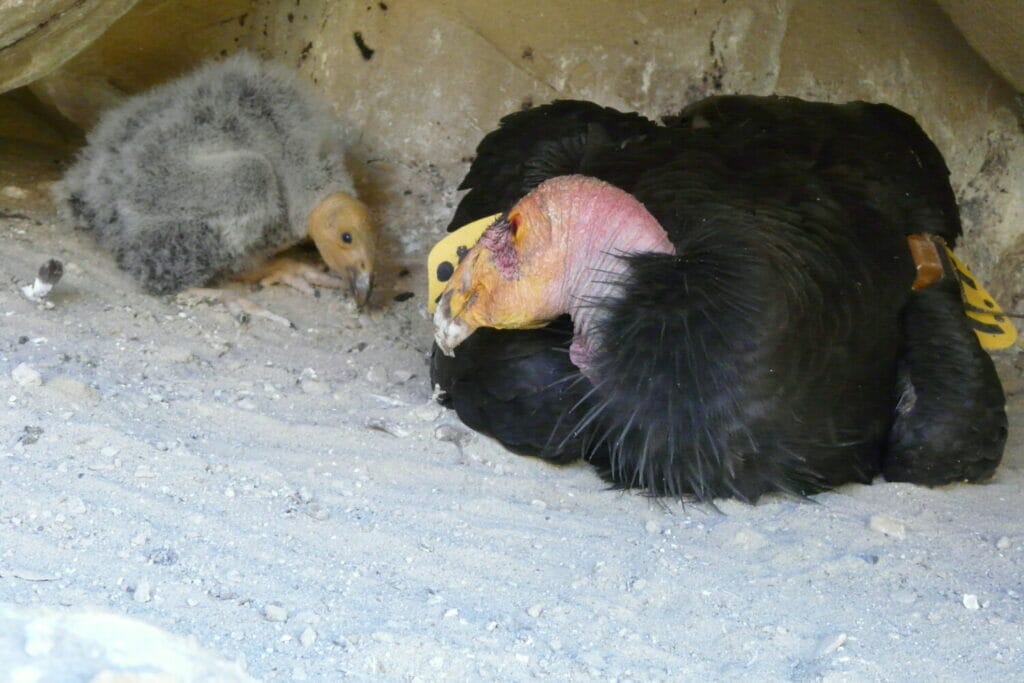
Nest
Adult pairs of condors may build up a number of suitable nesting sites over the years and move between them. The sites range from crevices or ledges in cliffs or hillsides or large holes in native trees. Locations of nests range dramatically and seem to have one main thing in common – the difficulty for predators to access them. Once a site is chosen, the actual nest is a basic affair with loose debris piled close to the egg.
Chicks
Once hatched, the chicks are covered in down except for the head and neck. Their eyes are already open and they are ready for feeding soon after. Development is slow with juvenile feathers not appearing until day 50 but the birds are building strength and socialising during this extended time in the nest. As the birds grow larger, they begin to experiment with moving outside of the nest. Fledging is difficult to pin down because the chicks do not just exit the nest and not come back. Their development is tied to the nest and they will remain with the parents and close to the nest for up to 6 months.

Well, that is our run down of when baby birds leave the nest. Whether it is within a couple of hours or months, the survival of all young birds is a remarkable feat. I was watching a young wren last week prancing around on the ground in front of me and in a flash, a kingfisher swooped in and took it. It was brutal. My utmost respect is always to those shorebirds that are up and running in such a short time from hatching. Incredible.
FAQ
For small birds like songbirds, they leave the nest when sources of food are most plentiful and breeding is timed to co-incide with this. That month is often June. Birds like the Common Crossbill can breed at any time of the year because of the reliability of their food source.
When birds leave the nest, they are referred to as fledglings and that means that they are capable of flying. Their wings and feathers have developed sufficiently for them to be airborne. Whether or not they have the confidence is another story.
There is no real answer for that as bird species are so varied as are their environments. What is certain is that it is a very dangerous time for them. They may have the physical features that allow them to fly but they are still just learning and any kind of hesitancy puts them at risk from predators.




